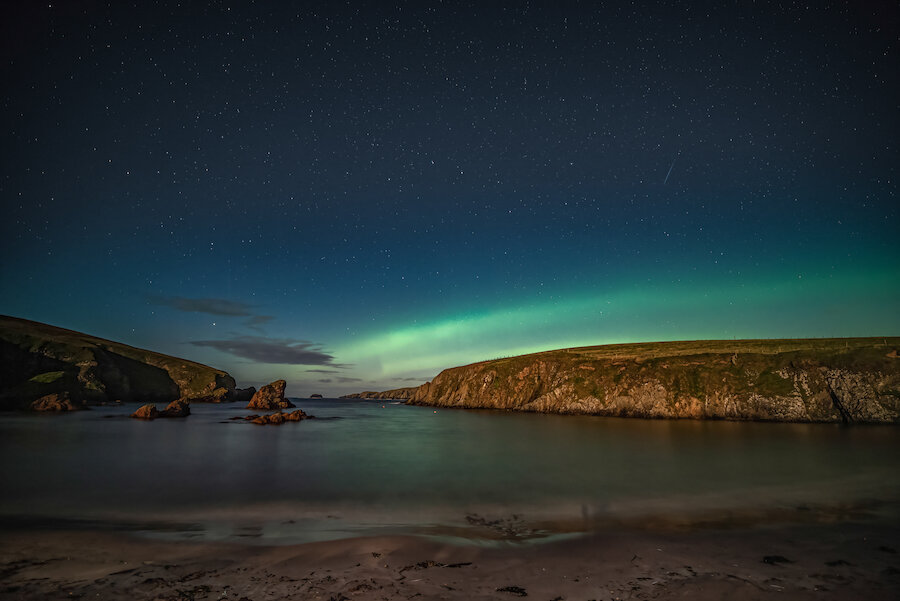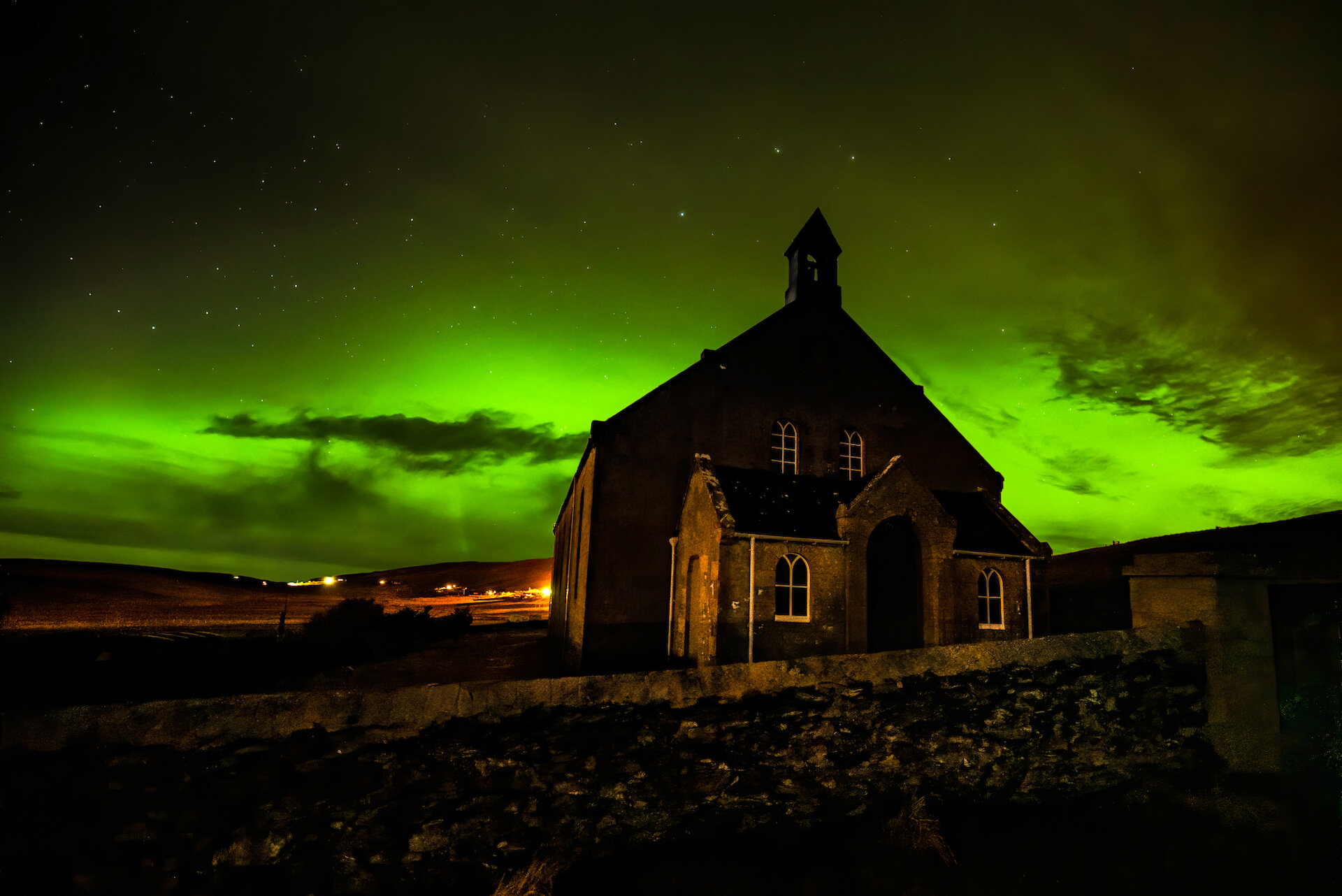Photographing the Mirrie Dancers, or as they're more commonly known, the Northern Lights, takes a bit of practice and patience, but when you do you'll have a keepsake of one of the world's most awe-inspiring phenomenon.
To get started, you'll need: a camera, a wide angle lens, a tripod and a cable release.
1. Start by planning
Make sure you take time to visit your chosen aurora location in the day, take some sample photos looking north, this is where the aurora will show. Choose a location with a low horizon, just in case the aurora is not very active, and check you have no telegraph poles in the shot. Also, see whether you can include any interesting foreground which will enhance the photograph. Look for reflections in a loch or a calm sea, interesting buildings, possible silhouettes, and sheltered positions if its windy.
On the night, check your shadow doesn’t show in your photo if the moon is low behind you.


